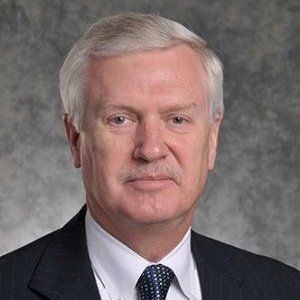

Rod Turk, the acting chief information officer at Commerce, said about 55 IT workers have taken acquisition-related training over the past year.
So now the department is turning to the people side of the equation.
Rod Turk, the acting chief information officer at Commerce, said the agency is ensuring its technology workforce is prepared for this technology future.
“We didn’t really reorganize in the strictest since. It’s more of a realignment,” Turk said on Ask the CIO. “As we looked into the future, it became more evident that we needed more contracting officer representatives, people who know contracts, people who know the contractors and people who then can make sure all the terms and conditions and all those things in the contract are being served properly.”

Additionally, Turk said his staff will manage more projects, which like a contract, has a beginning and an end.
“We needed more people thinking about timelines, milestones, cost, schedule and performance that you talk about in a program, project management format so we are placing an emphasis with our employees on contract officer representatives and what we call Federal Acquisition Certification for Program and Project Managers (FAC-P/PM) program for project and program management,” he said. “This is so we can better manage moving to the cloud, moving the contracts in such as way we get what we need when we move to the cloud and bringing to unity services so it makes it easier to move to the cloud so you get the shared service.”
Commerce is no different than many agencies who are rethinking the roles of the IT workforces. As the Trump administration pushes agencies to use more shared service, Commerce, for instance, has been heading in that direction for several years.
Commerce has spent the last two-plus years capturing the total cost of ownership for all of the back-office functions. It also has done a comparative analysis of public and private sector companies and detailed what it would cost for people, process and technology to improve these administrative services.
Turk said the continuous diagnostics and mitigation program, the Trusted Internet Connections (TIC) services from the National Oceanic and Atmospheric Administration and the enterprise security operations center are three examples of ongoing shared services the agency is taking advantage of today.
But it’s more than just shared services that are pushing these changes to workforce planning and hiring—it’s the needs around cybersecurity, moving to the cloud and the growth around big data that are driving the requirement to relook at the federal workforce.
Turk said part of the change management for the realignment was a constant discussion about what the future Commerce IT workforce would look like. He said the CIO’s office used blogs, all-hands meetings and meetings with functional areas to explain in detail why this change was necessary.
Turk said he told employees, “If you want to take those courses and become certified, we will give you the time and pay for the courses. It wasn’t if I mandated it. It was more at the discretion of the employee given that this is the way we needed to move and I let them make the decision if it was viable to their career. I’ve seen a significant uptick just over the last couple of months of the people who’ve gotten their project/program management certifications and their contracting certifications.”
He said about 55 people have gotten their certifications over the past year.
“This realignment is not a moving from one state to an absolute different state. It’s more of a linear process where over time we move toward a state of outsourcing, collaboration and strategic sourcing,” Turk said. “I do have individuals who are working on cybersecurity who are recovering developers. I have a lawyer working on cybersecurity. These individuals see where they want to take their career and it’s worked out well for us because then those who get these certifications we can give additional responsibilities or change their responsibilities and it benefits everybody.”
Federal employees can take FAC P/PM courses through the Federal Acquisition Institute either in person or online.
Turk said he’s taking this realignment even further by asking employees to create an individual development plan (IDP) so they can tell Commerce what they need in terms of training and skills so the agency can plan for those training requirements.
Copyright © 2025 Federal News Network. All rights reserved. This website is not intended for users located within the European Economic Area.
Jason Miller is executive editor of Federal News Network and directs news coverage on the people, policy and programs of the federal government.
Follow @jmillerWFED


